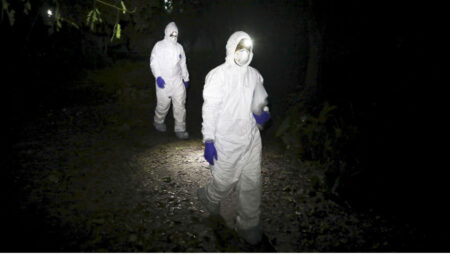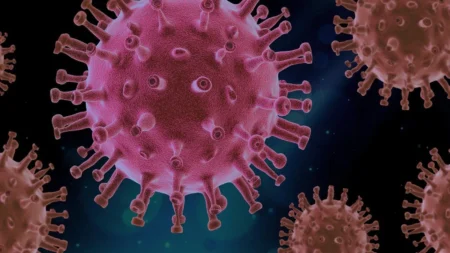Heavy efforts are being made to trace back the origin of the Nipah Virus in Kozhikode of North Kerala, which claimed the life of a 12-year-old boy on Sunday.
Several other samples of quarantined people have also been sent to the National Institute of Virology (NIV) in Pune for tests.
On Monday, State health minister Veena George said that the following week would be vital for the state and expressed assurance that the latest outbreak would be localized and contained like that of 2018.
The health minister also added that they have traced all contacts of the boy and quarantined. The health department will also investigate if the earlier deaths in the state had any identical symptoms.
“Different teams are working to investigate the source of infection. If required, more teams with experts will be assigned.
The whole state is already following strict physical distancing and masking, and thus, chances of high transmission are low. But we can’t lower our guard,” added the health minister.
All About Nipah
The Nipah virus is a zoonotic virus, usually transmitted from animals to humans. It can also be spread through contaminated food or direct contact between people.
It causes a range of illnesses in infected people ranging from asymptomatic infection to even acute respiratory disease and fatal encephalitis, which causes inflammation of the active tissues of the brain.
The Nipah virus can also cause severe disease in animals such as pigs, which can cause significant economic losses for farmers.
Symptoms in infected people include fever, headaches, muscle pain, vomiting, and sore throat.
Infection can also result in dizziness, drowsiness, altered consciousness, and neurological signs that point to acute encephalitis.
Some people can also go through atypical pneumonia or excessive respiratory issues, including acute respiratory distress.
Encephalitis and seizures can also be experienced in severe cases, leading to coma within 24 to 48 hours.
The virus’s incubation period, the interval from infection to the beginning of symptoms, is projected to range from 4 to 14 days. However, an incubation period as long as 45 days has also been reported.
Most people who usually survive acute encephalitis recover entirely; however, they can experience long-term neurologic conditions.
20% of patients approx are left with residual neurological aftermaths such as seizure disorder and personality changes.
The case fatality rate for Nipah is estimated at 40% to 75%. This rate can vary concerning the outbreak, dependent on local capabilities for epidemiological surveillance and clinical management.
Currently, there exist no drugs or vaccines for Nipah virus infection. However, WHO has identified Nipah as a priority disease for the WHO Research and Development Blueprint.
State Efforts
According to a statement by the government, a health team from the Centre visited Kerala’s Kozhikode district on Sunday, where the 12-year-old boy died after getting infected by the Nipah virus.
The team gathered and collected samples of Rambutan fruits from the area.
The sample of the fruit can assist in identifying the origin of the infection and confirm if the source of the disease was through a bat.
Three people, including the Child’s mother, have been shifted to the Nipah ward in Kozhikode medical college hospitals after showing a few symptoms of the infection.
The two other people among them are health workers. Twenty primary contacts and 158 secondary contacts of the deceased were immediately quarantined after the Nipah was confirmed.
The route map of the boy has also been released. A high alert has been issued in two neighbouring districts of Kannur and Malappuram in Kerala.
The National Centre for Disease Control team camping in the city visited the deceased boy’s house in Chathamangalam on Sunday. An examination of domestic animals and pets in the area is also being conducted by the State Animal Husbandry Department.
The location within a 3km radius of the deceased boy’s house has been sealed. The National Institute of Virology is also planning to open a lab on the premises of the medical college hospital to facilitate speedy testing.
The health department is planning to start a mobile application to monitor the Nipah virus situation. Kozhikode has reported Nipah infection for the second time in three years.
In 2018, it claimed 17 lives in the district. Two persons also survived the disease.













